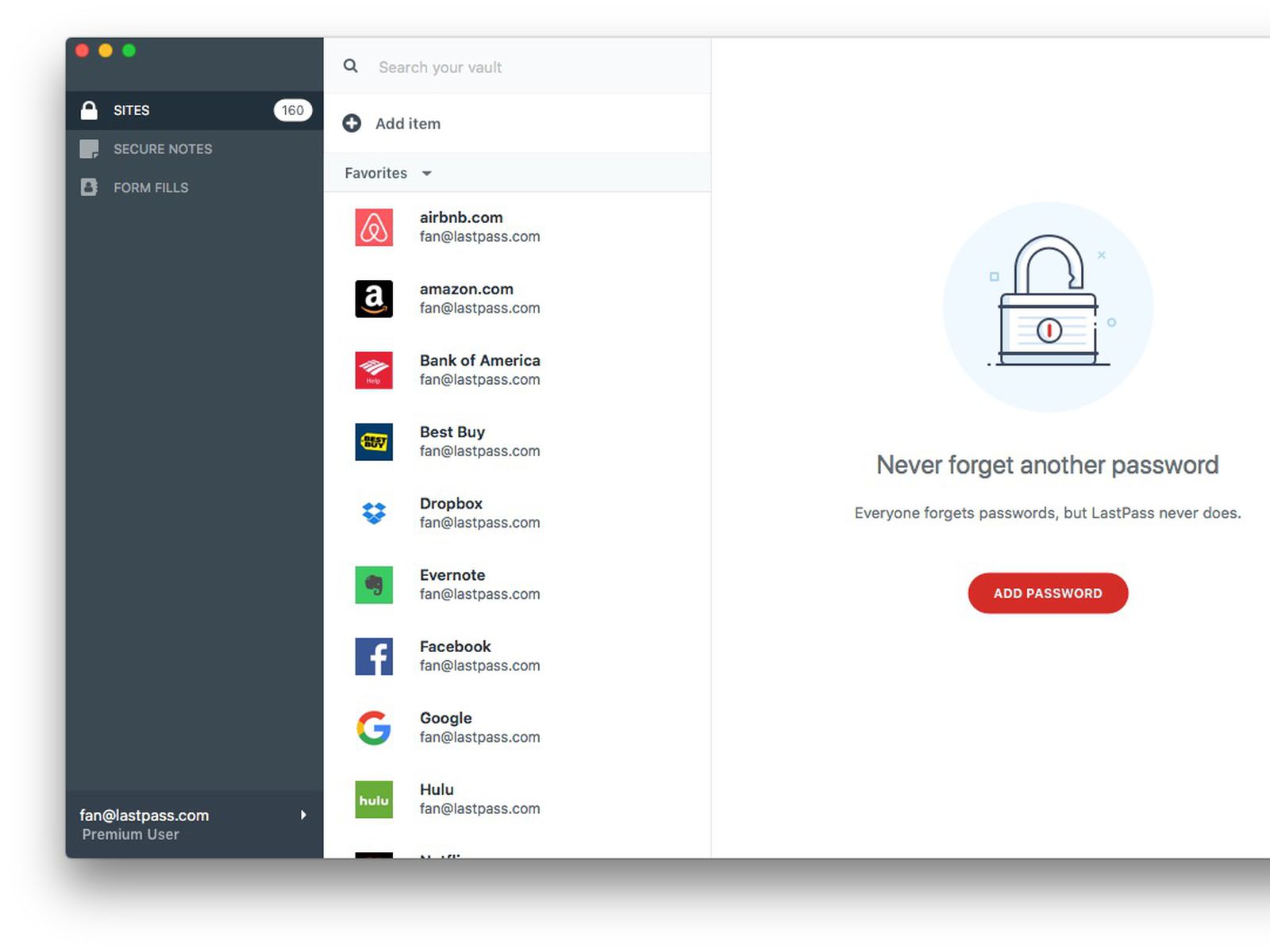

In Safari (on iOS) you can turn off from the main Settings app, tap Settings > Safari > Autofill > Names and Passwords and slide the slider off.This activity is different depending on what browser and what platform (iOS, MacOS, Windows 10) you are using.
#SAFARI INSTALL LASTPASS UPDATE#
Once you change a website password, you may have to also update either the Keychain or LastPass – one of them will update easily and one takes a bit more effort. That will close the LastPass screen and put you back to the website, but with the credentials filled in for you.Įven though I use the Apple Keychain, I make sure to use LastPass when updating or changing passwords on websites. On a website login page, tap the Share link, then tap the LastPass entry (and unlock it with your fingerprint), then find or tap the entry that has your credentials for that website. While you may have been using the cut-and-paste approach (which you have to for most apps), the Safari web browser (and Chrome and Firefox) on iOS can fill in the credentials faster using the iOS Share link. This just makes it easier on iOS to log into websites, saving the step of calling up LastPass to fill in credentials. I will tell you that for iOS (and my Macbook), I let the Apple Keychain also store my website username/password combinations, in addition to having them stored on LastPass. Of course, you have to do this separately for each web browser you use (Safari, Chrome, Firefox, Edge, etc.). Fortunately, other than when adding a new computer or device, you can turn off the Save Passwords feature on one computer/device, and that will turn it off on all the other computers/devices. The same think can happen with Firefox (signed in), and Safari (using your Apple ID and Keychain). So for Chrome, if you’re signed into your Google account and add the Chrome browser to a new computer or device, that new computer or device may be setup with Save Passwords turned on, and then the syncing process turns that feature on for all your other computers/devices Chrome installations. This can also happen if you use the account syncing capabilities of the web browser.
#SAFARI INSTALL LASTPASS UPGRADE#
When you upgrade to the latest version of a web browser, it might flip that switch back on even after you’ve shut it off. This can be turned off, and probably should be on most browsers, since it can conflict with LastPass. When you install a web browser, the default setting is to offer to save passwords. I’m sure I have passwords stored all over the place at this point! I use many browsers, sometimes on purpose and sometimes because I’m taken there (like Gmail pushes to Chrome). I have started mindlessly asking the passwords to be saved when I am running a browser on IOS (but never when I’m on the PC) just so that I don’t have the complications involved with LastPass.

What I’m finding is that I start using them because of the convenience between my PC and my IOS devices.
#SAFARI INSTALL LASTPASS HOW TO#
I haven’t bothered to look how to stop them, but I may. I get this request on Chrome all the time, and I wouldn’t be surprised if it shows up on the new Firefox 55.0.3 I just installed. This has an advantage on IOS devices because LastPass requires a copy/paste. I’m a long-time LastPass user but now every browser I use asks me to save passwords and declares that they are secure.

LastPass/Browser Password Conflict: a reader asks…


 0 kommentar(er)
0 kommentar(er)
